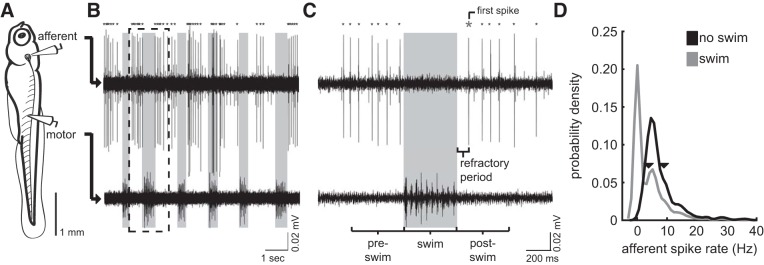Fig. 2.
Swimming inhibits spontaneous lateral line afferent activity. A: simultaneous recordings from afferent neurons from the posterior lateral line afferent ganglion and ventral root recording of motor neurons along the body were made in 29 paralyzed larval zebrafish between 4 and 7 days postfertilization. B: at the onset of each fictive swimming bout, the spontaneous spike rate of afferent neurons decreases. C: expanded view of dashed box in B shows that, in this example, spontaneous afferent activity is completely inhibited (shaded box). Three intervals of interest relative to the swim duration were used to assess changes in spike rate, pre-swim, swim, and post-swim. The interval between the termination of motor activity and initiation of the first spike after the swim, defined as the refractory period, was examined. Asterisks at top denote afferent spikes that exceed the minimum threshold for the spike detection algorithm, and larger asterisk indicates the first spike after the swim and termination of the refractory period. C: kernel density estimate of spike rates during swimming vs. nonswimming with arrows indicating the mean (n = 1,263).

